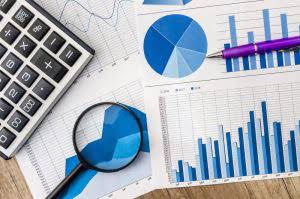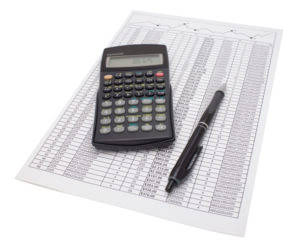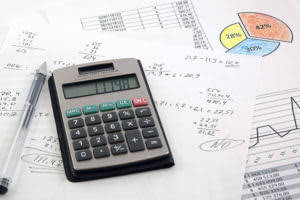
Let’s assume that using the formula we’ve given above, we’ve calculated the total labor cost for an employee to be $17 an hour. Finally, you can calculate the labor cost percentage by dividing the labor cost by gross sales and multiplying the result by 100. To streamline the process and get a quick estimate of your total labor cost, you can use our free labor burden calculator. The total labor cost can be calculated after you’ve gathered all the expenditures your company has made on behalf of an employee, such as healthcare, taxes, etc.

How TopBuxus 10x’d Sales Volume in Just 4 Months with ShipBob Case Study
Furthermore, precise calculations can assist in pinpointing opportunities for cost reduction. It can also enhance operational efficiency, contributing to long-term success. Consider a scenario where a company manufactures income summary 400 units of a product within a month. Afterward, you divide this combined cost by the number of units manufactured within a specified time. Get ShipBob WMS to reduce mis-picks, save time, and improve productivity.
- The production cost formula is a financial metric that is used for calculating the total cost incurred for production of any product or service within an organization.
- By knowing how to compute average costs, businesses can make informed decisions about pricing, budgeting, and expense reduction.
- Therefore, the manufacturing business incurs a production cost of $183,000 when manufacturing chairs.
- The concept of operating leverage is defined as the proportion of a company’s total cost structure comprised of fixed costs.
- It takes into account various cost components such as direct materials, direct labor, and overhead expenses.
- This means that product A is more profitable and efficient than product B, assuming that they have the same selling price and demand.
- The marginal cost will take into account the total cost of production, including both fixed and variable costs.
Strategies to Reduce Cost Per Unit
- You gotta keep a sharp eye and dig through your expenses to spot these.
- The next step is to calculate the total labor costs for your company, including all the expenditures we’ve mentioned above.
- Most production companies will try to keep their labor cost percentage under 30.
- Understanding how to calculate cost per unit in Excel can be a game-changer for anyone involved in sales, inventory management, or budgeting.
- While Greg can mark up the price of his candles (charging customers more than his competitor), he knows he should identify ways to reduce his costs to have a healthier margin.
- The ShipBob dashboard offers real-time visibility into your inventory, orders, and shipments across locations with analytics to help you grow.
- When a company sets the sales price for a product, they consider the costs of labor, material, and overhead.
If labor expenses go unchecked, they can get out of hand and significantly impact your bottom line. Monitoring the cost per unit over time can help businesses evaluate their efficiency levels. This analysis is essential in identifying where cost savings can occur and monitoring the impact of efficiency improvements in business operations. Pricing reflects both the cost per unit and the profit margin, and setting the right price for finished goods and services is crucial to maintaining profitability. Variable costs, or “variable expenses”, are connected to a company’s production volume, i.e. the relationship between these costs and production output is directly linked.

How to calculate cost per unit in Excel

We are compensated in exchange for placement of sponsored products and services, or by you clicking on certain links posted on our site. While we strive to provide a wide range of offers, SelfEmployed does not include information about every financial or credit product or service. For those who regularly perform cost per unit calculations, automating how to calculate cost per unit the process with Excel macros can be a real time-saver. Macros allow you to record and repeat a set of actions, which is perfect for repetitive tasks. For this reason, variable costs are a required item for companies trying to determine their break-even point.

Efficient logistics management

If you decide to go for self-delivery, implementing route optimization software can help you plan and find the most efficient delivery routes. So, you should encourage employees to provide suggestions for quality improvement, reducing the costs of returns management. Labor costs that differ based on location, skill level, and demand also affect your final cost per unit. So, the individual components of the cost per unit are understood.
- Knowing the cost per unit can help businesses to set prices, manage budgets, evaluate performance, and make decisions.
- Economies of scale are the cost savings that you can get as you increase your level of production.
- One-fourth of online customers return 5-15% of what they purchase, and the retail industry loses about $50 billion in the form of deadstock per year.
- Variable costs, or “variable expenses”, are connected to a company’s production volume, i.e. the relationship between these costs and production output is directly linked.
- Further, building strategic and long-lasting relationships is important to foster supplier collaboration on cost-saving initiatives.
Setting the Right Selling Price
We will also provide some examples to illustrate how cost per unit can be applied in different scenarios. Unit product cost is the total cost of a production run, divided by the number of units produced. A business commonly manufactures similar products in batches that may include hundreds or thousands of units per batch. Costs are accumulated for each of these batches and summarized into a cost pool, https://www.bookstime.com/articles/full-charge-bookkeeper which is then divided by the number of units produced to arrive at the unit product cost.
